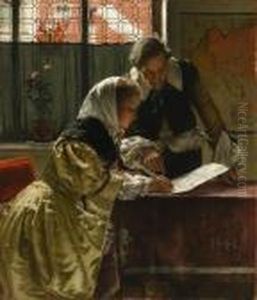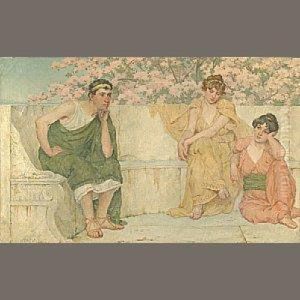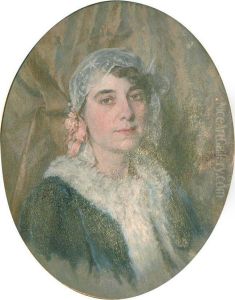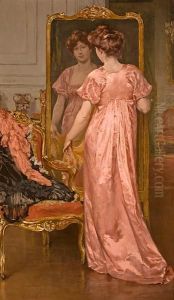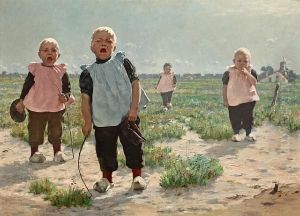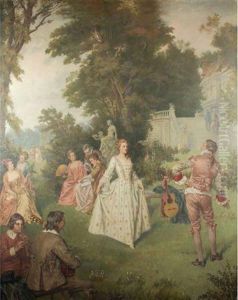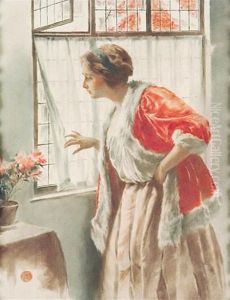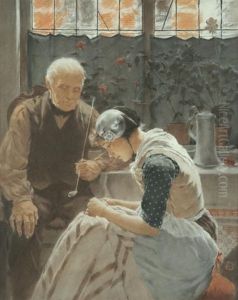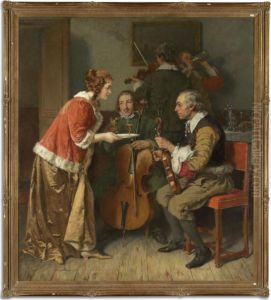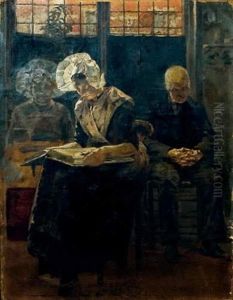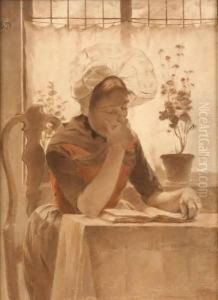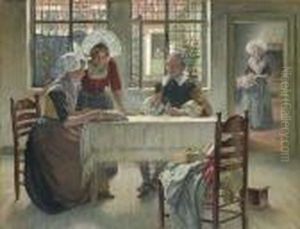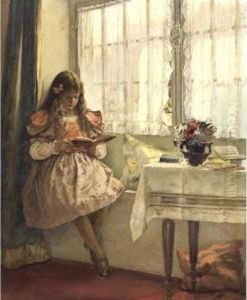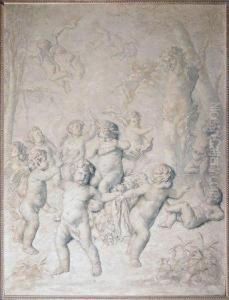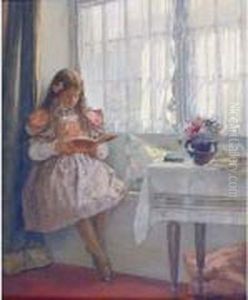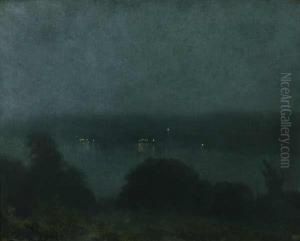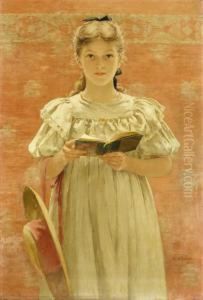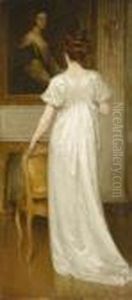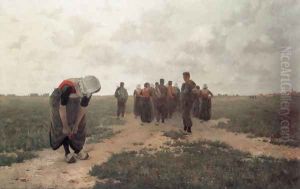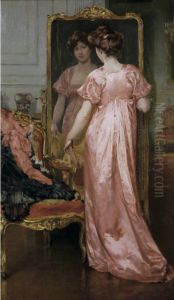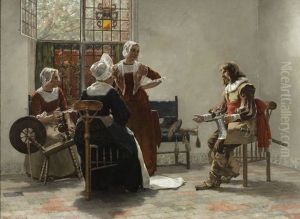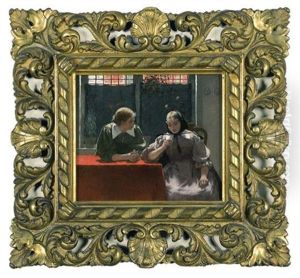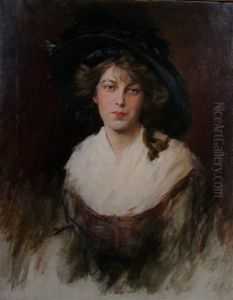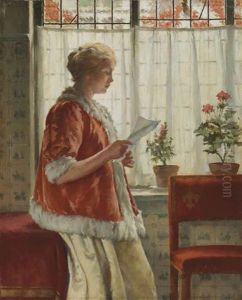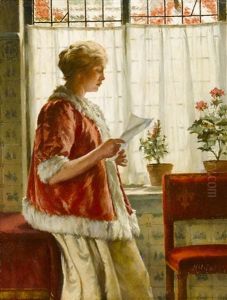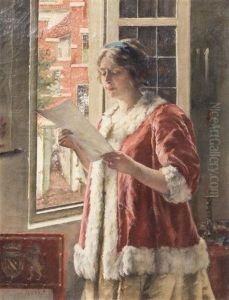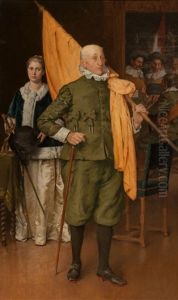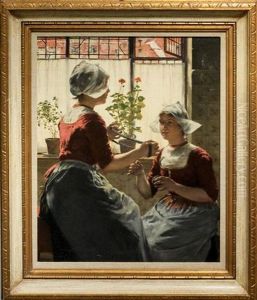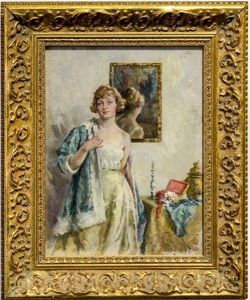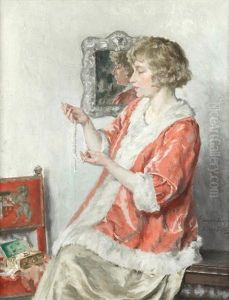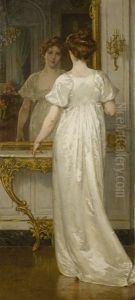Walter MacEwen Paintings
Walter MacEwen was an American artist born on January 13, 1860, in Chicago, Illinois. MacEwen's artistic inclination was evident from a young age, and he pursued his interest in art by studying at the School of the Art Institute of Chicago. Seeking to further his education and experience, he moved to Europe, which was a common practice among American artists of that time who wished to immerse themselves in the rich artistic traditions of the Old World.
In Europe, MacEwen settled in Paris and enrolled in the prestigious École des Beaux-Arts. He studied under renowned academic painters such as Jean-Léon Gérôme and also had the opportunity to learn from Carolus-Duran. The influence of these masters is evident in MacEwen's work, which often showcased technical proficiency and a classical approach to composition and subject matter.
MacEwen's oeuvre primarily consisted of genre scenes, often depicting idyllic and pastoral settings that resonated with the romanticized vision of European peasant life. These works were well-received in both Europe and the United States, enabling MacEwen to gain a transatlantic reputation. His paintings were characterized by a refined use of light and color, as well as a keen attention to detail that brought his subjects to life.
Throughout his career, MacEwen exhibited his works widely, including at the Paris Salon, where he received several honors. His art was also showcased at international expositions and in private galleries. In addition to painting, MacEwen was known for his etchings and watercolors.
Despite his success in Europe, MacEwen maintained ties to the American art scene. He was a member of the National Academy of Design in New York and the American Watercolor Society. His works are part of several important collections, including those of the Art Institute of Chicago and the Metropolitan Museum of Art.
Walter MacEwen passed away on March 20, 1943, in New York City. His legacy endures through his contributions to American and European art at the turn of the 20th century, and his paintings continue to be appreciated for their beauty and historical value.
